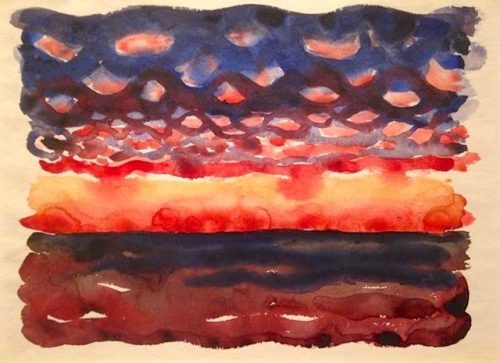The scarlet ibis stood about twelve inches high, a
round-backed...

The scarlet ibis stood about twelve inches high, a
round-backed bird with a long black beak and feathers a deep and dusky red. As
if a splash of grapefruit juice was added to the glass of cranberry. The ibis
stood behind a glass case in a museum in Salem, Massachusetts in a room with a
whale jaw hanging from the ceiling, and an interactive wind display – move
the small steering wheel, see the way the movement of air shifts the fine white
sand. The height of the wheel prescribed the intended age of its interactors. A
toddler, three feet high, in checkered over-alls and a knit hat with ear flaps,
twisted the wheel this way, that, back forth, and the fan inside flung the sand
into rippled dunes. The toddler’s father crouched behind him and spoke quietly
in the small boy’s ear. “See it move?” he said. “You’re doing that.”
Nearby, the ibis stood with other birds. A snowy egret, a kingfisher,
lots of finches and warblers, all perched on pins against the wall. They were
stuffed and wired, but the mind didn’t have to work hard to imagine them in
movement, in darty flight or beaking dirt for bugs. A flesh-and-bloodness
remained, a sense of muscle twitch, neck about to stretch, wing about to spread.
Brown polka dots, green flares, a blaze of red on wingtip, a glimmery band of
purple. The staggering variety of life on earth.
Other rooms held famous paintings. The dresses Georgia
O’Keefe wore on her body were on display (there was no muscle movement to be
detected there; they hung flat, shed, dead). A digital exhibit explored four
dimensionality. In a dark space walled by translucent screens, letters were projected
falling and spinning. The effect was like falling through an outer space where stars
were made of alphabet. Chaos, infinity, potential.
The sense of limitlessness neared frightening. The birds
provided a more comprehensible sense of time and place and raised questions
there were answers to. How does the scarlet ibis get that color? Does it absorb
the sunsets? No. It eats prawns. It gulps shrimp and the pigment tints the
feathers. O’Keefe’s paintings are saturated with sunsets, sands, skulls, skies,
petals spreading. Her dresses were black and white. She hasn’t filled them,
hasn’t swished the skirts with her legs, in over thirty years. Who knows when
that ibis swallowed its last shrimp.
All our words and work – our search for food, our
migratory action, our entries, exits, our gathering with others in our
quotidian efforts to keep going, the messages we send to try to make ourselves
understood (I want you, I love you, I’m hungry, I’m scared) – will
be pulverized by time. Our letters and the bones that held us up, stardust. We
try to makesense in the meantime, nagged by a feeling of a promise unkept, something
on offer from the start we’ll never be able to find. We end empty handed,
trying to steer the wind.
[Georgia O’Keefe, Sunrise and Little Clouds No. II (1916)]



